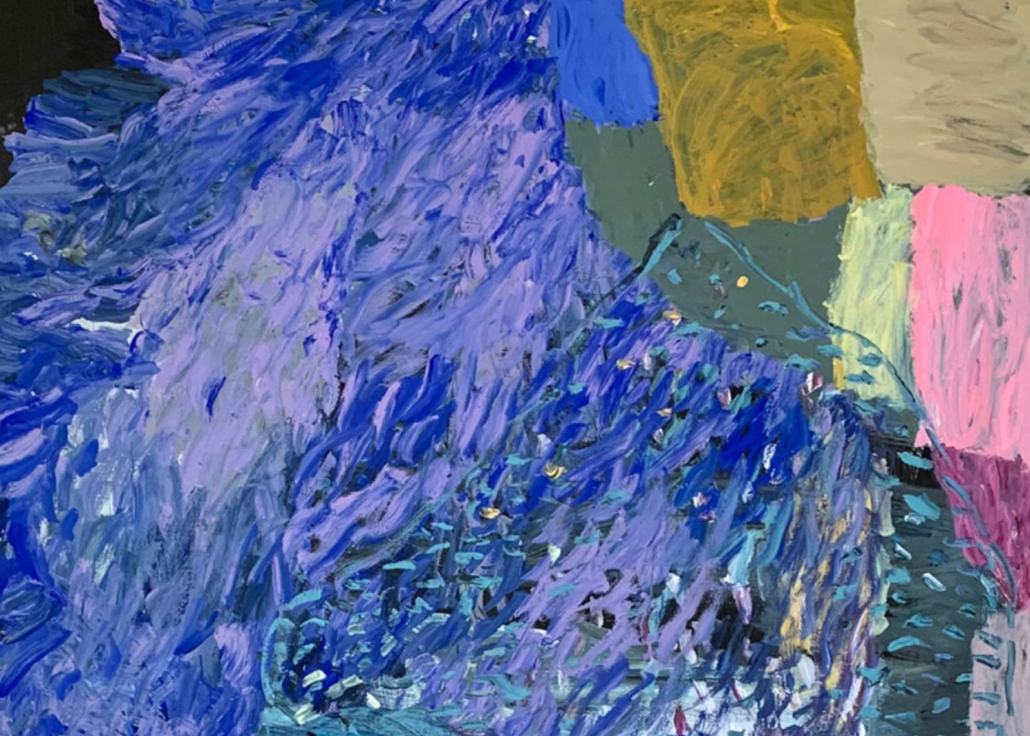Image: ‘Air Bubble’ (detail) by Catherine Cassidy, 2023. Catherine Cassidy is an Australian artist based in Sydney. She holds a Master of Fine Arts in Painting and was educated at RMIT University in Melbourne and the National Art School in Sydney. Her work is represented in private and public collections around Australia. Catherine investigates the emotive power of colour and mark-making to represent elemental and natural forces.
‘I saw the inscape freshly …’
Andrew Collis
Earth Sunday, Season of Creation B
John 1:1-14
We have received a record number of entries for the Blak & Blu pen-on-paper art prize. This year’s theme, set by founding sponsor Blak Douglas, is “Deep within”. And so, we have entries with titles including “Joy deep within”, “Deep within the chrysalis”, “The land of the Gadigal – deep within the garden”, “Seeds of courage” …
The Blak & Blu theme echoes the Season of Creation theme for Year B: the Word in Creation … which calls to mind the concept of “inscape” popularised by English poet Gerard Manley Hopkins SJ, who writes: “The world is charged with the grandeur of God …”
And in a journal entry from 1871: “I do not think I have ever seen anything more beautiful than the bluebell I have been looking at. I know the beauty of the Lord by it. Its inscape is mixed of strength and grace, like an ash tree. The head is strongly drawn over backwards and arches down like a cutwater drawing itself back from the line of the keel. The lines of the bells strike and overlie this, rayed but not symmetrically …”
Hopkins felt that everything in the cosmos was characterised by inscape. Not static but dynamic. Each being “selves”, that is, enacts its identity.
“I saw the inscape freshly, as if my mind were still growing …”
The concept shares much with Wordsworth’s “spots of time”, Emerson’s “moments”, and Joyce’s “epiphanies”, showing it to be a characteristically Romantic and post-Romantic idea. But Hopkins’ inscape is also fundamentally religious: a glimpse of the inscape of a thing shows us why God created it.
“Each mortal thing does one thing and the same:/ … myself it speaks and spells,/ Crying, What I do is me: for that I came.”
Related terms include “transcendence” and “the soul of art” …
“Poetry is in fact speech employed to carry the inscape of speech for the inscape’s sake …”
And what is the “inscape of speech” if not communication, communion? Be doers of this Word, says the apostle James. Become poets of the Logos (James 1:22).
We might even consider the inscape of scripture and tradition … texts and practices as bearers of promise … the story of Jesus and friends, from proclamation and ritual … to creeds and doctrines … songs, paintings, the flowering of truth … in communities, schools, hospitals … contemplation, repentance, peace-making … encounters with beauty … Which is exciting because it means that the wisdom of scripture and tradition is becoming flesh, is happening … in and through us … and us … and us …
So, let’s attend to the gospel for today. Reading three times – with love for the Word (for the world) … with love for the promise, the happening … Reading three times, responding to three prompts: Heart; Christ/a; Call.
Firstly, then. How does your heart respond to the reading? …
Second. Where is Christ or Christa, the Wisdom of God to be found? …
Third. What are we called to be or to do? …
We saw the inscape freshly, as if our minds were still growing. Amen.




